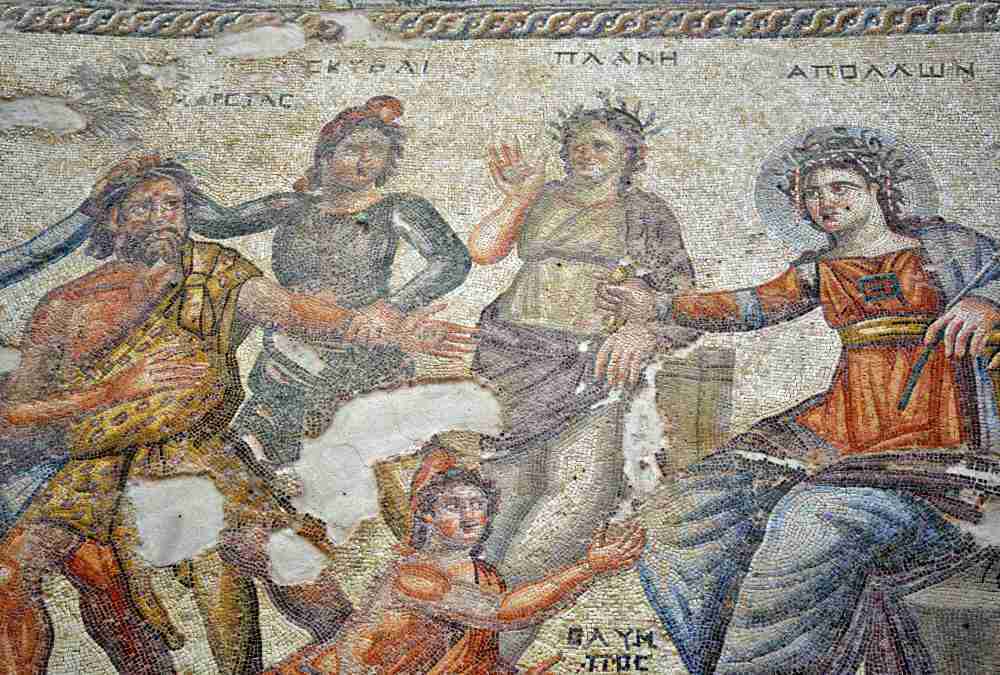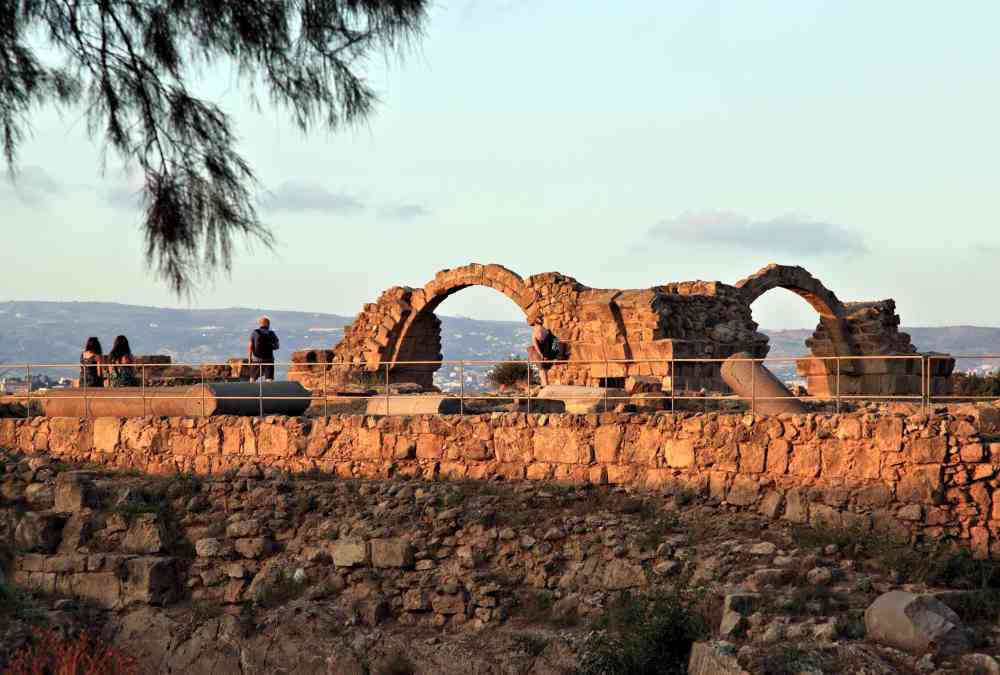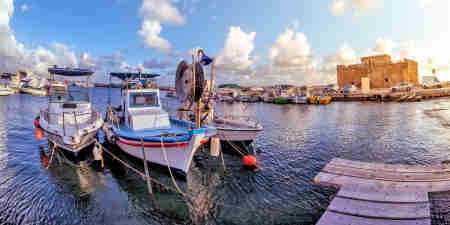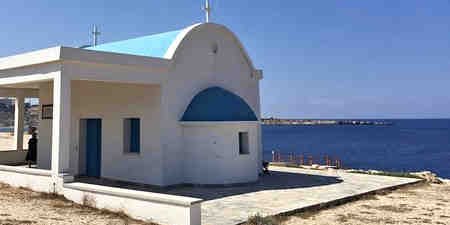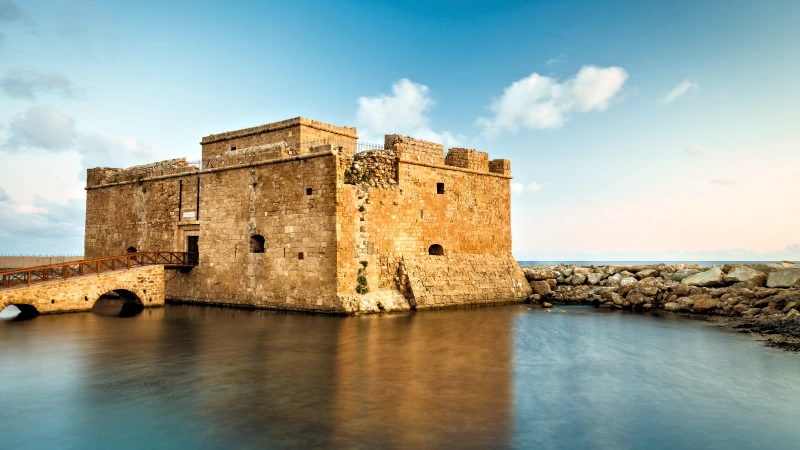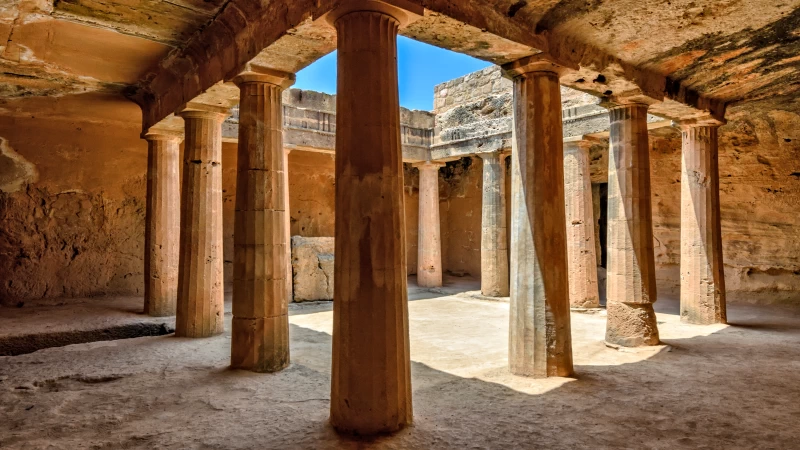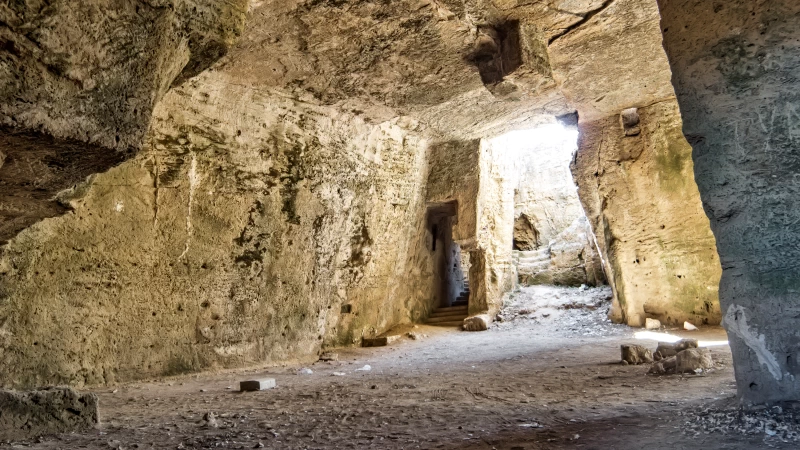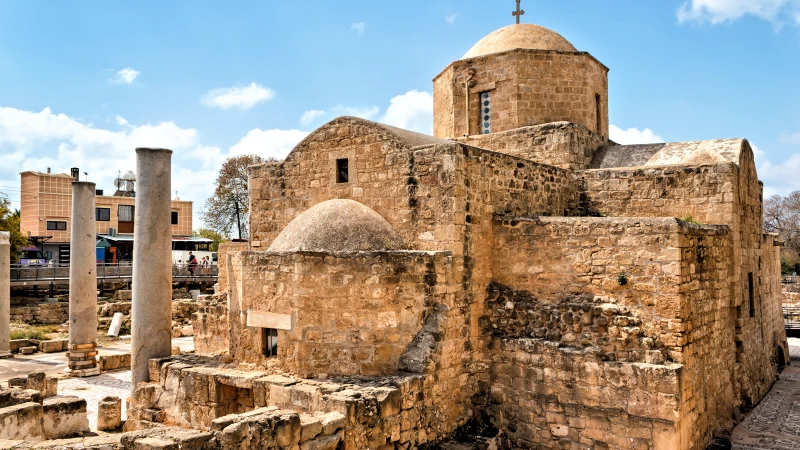Kato Paphos Archeological Park
A UNESCO World Heritage Site since 1980, the Kato Paphos Archeological Park lies within the Nea Pafos area of the city. It is an outstanding tourist destination, noted for its ancient houses and ecclesiastical buildings unearthed from 1962 when the Department of Antiquities commenced digs at the site until today.
Top reasons to see the UNESCO-listed Kato Paphos Archaeological Park
Open daily, year-round, the Kato Paphos Archaeological Park is one of the main tourist attractions on the island. In spring, it’s a colorful sight, with hundreds of crimson poppies showing their pretty heads between the ruins of the ancient city. The countryside around is a sea of canary yellow and neon greens, which contrast in postcard-inspiring vistas against the vestiges of Nea Paphos.
Well marked paths lead the visitor to the wonders of the Roman era, the villas of Dionysos, the House of Aion, Theseus, Orpheus, all flaunting impeccably preserved mosaic floors. These homes are the gems of the complex, which also includes the Agora, the Theater, the House of Four Seasons, the Asklepieion, and the remains of the Saranda Kolones Byzantine castle, to mention the most important landmarks. With so much to see, you could spend hours pottering around the archeological park of Paphos.
The Kato Paphos Archaeological Park lies within the coastal area known as Nea Paphos, the “New Paphos,” which was founded in the 4th century BC by Nicocles, the last king of Palaipafos. In ancient times, during the Ptolemies, New Paphos was the capital of the island. No wonder that the monuments forming the present complex are so richly adorned with mosaics, which are extremely rare, and, according to UNESCO, they are also amongst the most beautiful specimens in the world.
Pictures do not do justice to the sights offered by the Paphos Archaeological Park. The House of Dionysos, one of the most important monuments of the site, stretches over 2000 m², with over 550 m² of its floors covered with mosaics. At the entrance, you are welcomed by a depiction of the sea-monster Scylla. This is the only mosaic from the Hellenic period in the house. You will notice that, compared to other creations that decorate the floors of the House of Dionysos, its colors are faded. But the artistry and the details of the artwork are remarkable.
The House of Orpheus shares its architectural style with the House of Dionysos, with quarters arranged around a central courtyard. In the main room of this building, a mosaic of Orpheus among the beasts impreses the visitor with a delicate balance of blues and earth tones. North of the House of Orpheus, at the House of Four Seasons, as its name implies, the mosaic depicts the mythical personifications of spring, summer, autumn, and winter.
Dating from the 2nd century AD, the Villa of Theseus stands over the ruins of other houses from the Hellenistic and early Roman periods. There’s evidence that this building remained in use until the 7th century AD, most likely as the residence of the governor of Cyprus. It is a massive construction, with over 100 rooms, and mosaics to match the prestige of its inhabitants. Think Achilles´ first bath, Theseus and the Minotaur, Poseidon and Amphitrite, and other mythological scenes added throughout the years to raise the status of this institution.
Part of the House of Aion has not been unearthed, but what archeologists brought to light is a perfect illustration of why the Kato Paphos Archaeological Park has exceptional historical value. This is where you will see the most spectacular mosaic of Paphos, a panel featuring depictions of the newborn Dionysos, the Triumph of Dionysos, the beauty contest between Cassiopeia and the Nereids judged by Aion, Apollon and Marsyas, and Leda and the Swan.
Of the Agora, only the foundations can be observed, while at the site of the Theater on Fabrika Hill, the University of Sydney still conducts archeological research and excavations. Then, you have Saranda Kolones, just north of the harbor of Paphos, an impressive Byzantine fortress, albeit in ruin. Forty granite columns give their name to this attraction of the Kato Paphos Archaeological Park. Built during the Third Crusade, Saranda Kolones (Forty Columns) was a concentric castle, with four imposing towers surrounded by an outer wall with eight defense towers. Only the first floor of the palace was preserved despite some disturbance by looters and the vicissitudes of time.
A day is not enough to visit the Kato Paphos Archaeological Park. There’s a lot to experience among these walls that still tell stories of a glorious past when Cyprus was a force to be reckoned with.
Read More
Read Less
